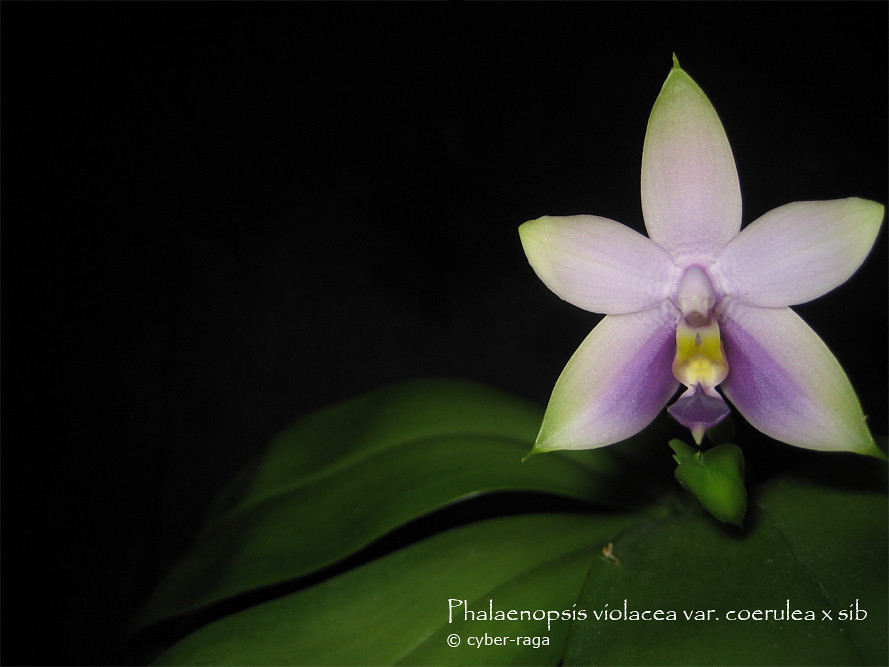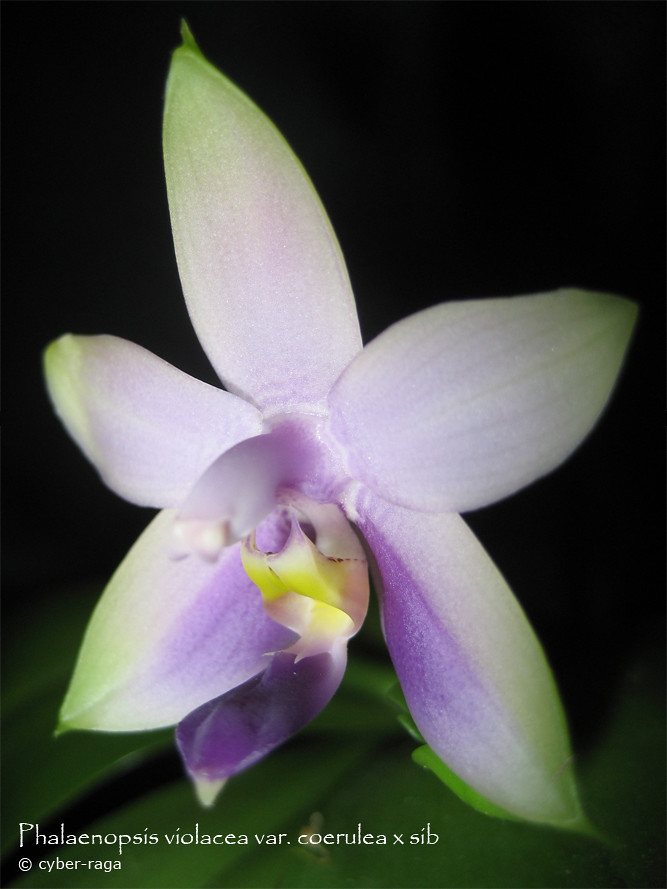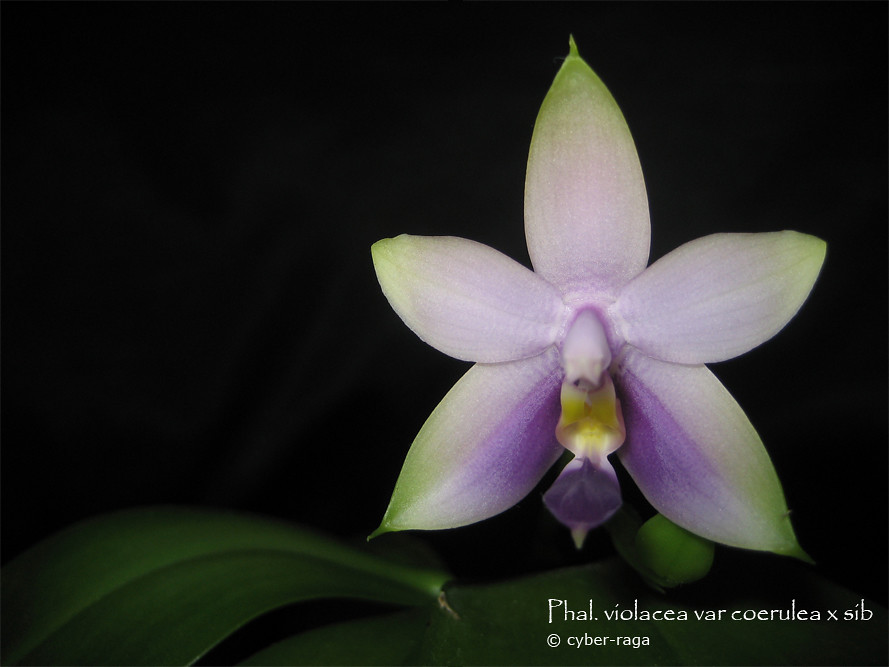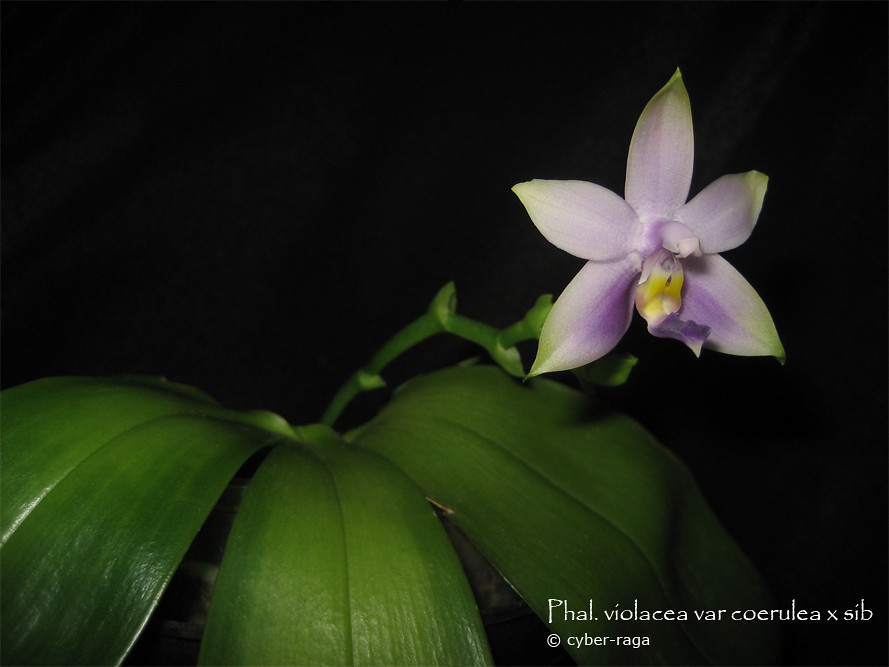 |
| Phalaenopsis violacea with blue flower form |
Phalaenopsis violacea var. coerulea
In their native habitat which ranges from the Malaysia, Borneo, Indonesia and Sumatra at 150 m low altitude, Phalaenopsis violacea can be found growing as an warm loving epiphyte in shady and high humidity condition.
Different flower color forms exist, such as variety 'Malayan', 'Blue', 'Alba' and 'Sumatra' as this orchid species have a widespread geographical distribution.
Since July 2010, I have been growing this young orchid at my kitchen yard that faces southwest direction. It receives about 3-4 hours of filtered morning light next to my kitchen window. I have retained the orchid in their original plastic pot with loosely packed moss as medium, to minimize disruption and shock to plant.
The orchid is drenched thoroughly only once a week, as the moss is capable to retain moisture and to minimize the chance of rot. So far the plant had produced a new leaf and put up a fresh new flower spike under this condition. The photo above shows the plant's 1st flowering under my care, since my acquisition from Ching Hua Orchids (Taiwan Nursery).
The size of the 1st flower is about 3cm (wide) x 4cm (height).
The size of the 1st flower is about 3cm (wide) x 4cm (height).
 |
| Close-up of the 1st flower |
This is the 1st time that I managed to grow and flower this orchid genus after several attempts over the years. Many a time, my orchids are destroyed by pest, usually spider mites. Every week during watering, I'll wet the underside of the plant's leaf with water and check for mites.
One worthy thing to note, the flower emits a sweet fragrance during daytime and the flower bud opens one to two after another in succession on a flatten zigzag spike. The spike will continue to extend for several months, in view of the plant's successive flowering. Each flower bud would last about 2-3 weeks, so you can enjoy continuous flowering over many months.
The photo below shows the 2nd flower bud next to the 1st one from the same spike. The previous bud start to wither 3-4 days after the new bud have fully opened. I have noticed the color of the 2nd flower bud is more 'washed-out' and lighter than the former bud, so I hope the color intensity of its subsequent flowering over the next few months would improve.
Let's wait and see if the forthcoming 4th flower bud can maintained the same color intensity?
The photo below shows the 2nd flower bud next to the 1st one from the same spike. The previous bud start to wither 3-4 days after the new bud have fully opened. I have noticed the color of the 2nd flower bud is more 'washed-out' and lighter than the former bud, so I hope the color intensity of its subsequent flowering over the next few months would improve.
 |
| 2nd flower bud (left) and 1st flower bud (right) |
After about 2 weeks, the 2nd bud faded and a 3rd bud emerge on the same spike. This time round, the orchid have managed to produce flower of deep color intensity. (See photo below)
 |
| 3rd flower bud from the same spike |
 |
| View of the extended zigzag spike |
Let's wait and see if the forthcoming 4th flower bud can maintained the same color intensity?

No comments:
Post a Comment